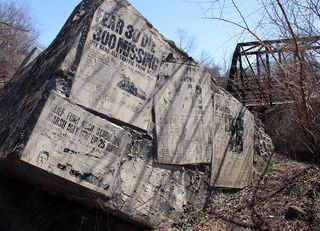Environment
Toronto's Actions After Hurricane Hazel Still Reap Rewards
Hurricane Hazel in 1954 galvanized flood risk reduction.
Posted May 19, 2021 Reviewed by Ekua Hagan
Key points
- On October 15, 1954, Hurricane Hazel arrived in Toronto, killing at least 81 people as river waters ripped houses from their foundations.
- Action after Hurricane Hazel in 1954 continues to reap rewards today in terms of reduced flood risk.
- Addressing flood risk by reducing floodplain development can produce many other benefits, such as recreational green spaces.
Toronto, Ontario, Canada prides itself as being "a city within a park." The high quality of life enjoyed by many residents is partly attributed to the vast green spaces, including long bike and walking trails alongside gorgeous rivers. A significant impetus toward making and keeping this managed ravine system was Hurricane Hazel.

The disaster that helped shape Toronto
On October 5, 1954, a tropical storm formed in the southern Caribbean, upgrading to a hurricane within a day. On October 15, it arrived in Toronto and the rain began. Hurricane Hazel would go down in history as a disaster that helped to shape the city.
At least 81 people died that night as rivers burst their banks and the torrential waters ripped houses from their foundations. Firefighters lacked training and equipment, so they were forced to listen to people's screams as they were swept away. The rescuers' spotlights illuminated the gap between safety and the dwellings caught amid a raging flood.
Raymore Drive in western Toronto, previously a placid setting where families could enjoy their river view, accounted for more than one-third of the deaths. A strip of houses spanning over 300 meters vanished, swallowed overnight by the Humber River.
On the city's eastern side, the Don River overflowed. The deluge knocked out bridges, trapped people in vehicles leading to several dramatic rescues, and forced homeowners to shovel out a mud layer more than ankle-deep.
Toronto recovered, burying its dead, weeping with the bereaved, and supporting the rescuers haunted by who they could not save and those who drowned from their own ranks. The city also moved to ensure that this level of catastrophe would never happen again.
How Toronto now handles flood risk
Within a wider plan reorganizing municipal governance, a new citywide government took responsibility for planning and development. Its remit encompassed most of managing watersheds, sewage, transport, and floods, helping to coordinate flood disaster prevention. Rather than rebuilding houses in the same places, to be wiped out again in a later flood, recreational areas and parks succeeded the ravaged properties, recognizing that a floodplain's purpose is to be flooded when it rains a lot.
Today, the Humber River, the Don River, and their tributaries still flow right through the city, capturing the outflow from the watersheds to the north and discharging into Lake Ontario. The ravines around these rivers are protected, used for recreation and enjoying nature.
They are extensively managed. City staff engineer the banks to avoid erosion toward infrastructure, direct drainage away from properties, monitor for and remove invasive or harmful plant species, and maintain the benches, bridges, footpaths, and cycleways. As scattered information signs explain, much of the area has still been turned over to the environment, letting nature take its course.
At dawn, you might startle a deer grazing alongside the path. In the autumn, people gather on the bridges to watch salmon fighting their way upstream to breed. Student groups gain on-site environmental education in the middle of a sprawling urban agglomeration. Stray too far off the path and your skin might suffer from touching wild parsnip, giant hogweed, or poison ivy.
The rivers still break their banks during storms such as Hurricane Isabel in 2003 and Hurricane Sandy in 2012. It is much better to have water, mud, and broken branches slewing over meadows and paths than ripping down houses with people inside.
Life after Hurricane Hazel
Toronto is still not risk-free or disaster-free. Urban expansion and increasing impermeable paving augment runoff. Basements regularly become inundated, causing thousands of dollars of damage per household. Underpasses flood, threatening the lives of anyone foolish enough to try to drive, walk, or cycle through the waters. Human-caused climate change is projected to increase storm intensity which means more rainfall.
Eroding bluffs border the ravines in many places, creeping toward houses that eventually must topple. Would prolonged hot and dry spells increase wildfire risk, with its accompanying smoke, in the middle of the city?
Meanwhile, social ills plaguing most major cities afflict Toronto. Inequity, poverty, racism, aging public infrastructure, crime, and conflicting governing priorities are, sadly, always evident.
Yet Hazel's legacy continues to save lives. Raymore Drive remains residential, with the houses ending where the street dips down toward the river. At the bottom, turn north, cross the bridge, and see the memorial to those who died during the hurricane disaster. Turn south or walk across the grass to find the 1954 death traps replaced by a children's playground and green field abutting the riverside pathway.
Anyone seeking to develop these beautiful areas would be ostracized for wrecking nature and ruining people's outdoor exercise. Not everyone realizes the importance of letting a floodplain function as a floodplain for preventing a flood disaster.
References
Gifford, J. 2004. Hurricane Hazel: Canada's Storm of the Century. Dundurn Press, Toronto.
Nirupama, N. and C. Armenakis. 2014. Flood Risk Mapping for the City of Toronto. Procedia Economics and Finance, vol. 18, pp. 320-326.
Nirupama, N., C. Armenakis, and M. Montpetit. 2014. Is flooding in Toronto a concern? Natural Hazards, vol. 72, pp. 1259-1264.
Robinson, D. and K. Cruikshank. 2006. Hurricane Hazel: Disaster Relief, Politics, and Society in Canada, 1954-55. Journal of Canadian Studies, vol. 40, no. 1, pp. 37-70.




